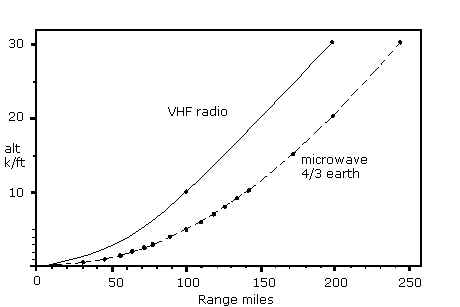
Venom NF.3 Radio, Intercom and Telebriefing Installation
VHF/interphone Operation
[This is precis of information drawn from A.P.2538HA, Vol.1, Part 1, Sect.1]
The ARI 5490 VHF radio installation of the Venom NF.3 comprises two transceiver units, TR 1934/1935, situated aft of the bulkhead behind the pilot's seat and providing 10 spot frequency channels on each unit, or 20 in all. The frequency on each channel is predetermined by insertion of a crystal of the appropriate fundamental, and channels are selected remotely by means of rotary knobs on two Type 382 Controllers located on the left side of the instrument panel just in front of the throttle lever, convenient to the pilot's left hand. Each transceiver unit has a separate aerial, but only one unit can be operated at a time. The unit desired is selected by a spring-loaded switch on the instrument panel immediately above the the two ten-channel controllers.
The two transceiver units have different, overlapping VHF frequency bands: one covers 100-125 MHz, the other 124.5-156 MHz. Range performance air-to-ground is dependent on aircraft altitude: maximum range quoted for an aircraft at 10,000' altitude is 100 miles. At 30,000' useable range was determined to be 200 miles. (Air-to-air range is 175-200 miles at 10,000'; longer ranges can be achieved by provision of airborne relay.) These figures are graphed below against 4/3 earth horizon range for microwave radar.

VHF and microwave horizons. The 4/3 earth curve shows range to microwave horizon for radiation at 0° elevation in conditions of normal refractivity. VHF curve for useable voice R/T is extrapolated from only two data points and is merely illustrative.
Additionally the installation allows for interphone communications between the pilot and the radar operator. Both crew members are provided with headsets and separate mic-tel sockets giving independent access to the selected VHF transceiver, separate switches to connect into the radio circuit, and separate switches to mute the radio and open the interphone circuit. The pilot's press-to-transmit (P to T) switch is a thumb button located on the GGS Mk.5 gyro gunsight control on the throttle lever; his press-to-mute (P to M) switch is a thumb button on the hand-grip of the control column. The radar operator's P to T switch is mounted to his right on the cockpit wall, and his P to M switch is fitted to the cockpit floor, operated by his left foot.
Closing the pilot's P to T switch disconnects the radar operator's microphone line so that only the pilot can transmit, and closing either P to M switch disconnects the transmitter so that only intercommunication between the crew positions can occur. In operation this means that the pilot has priority over his radar operator in using the VHF transmitter to talk out, although both can; but the interphone has priority over the radio, allowing either crew member to interrupt the radio link in order to talk directly to the other.
A small problem with this equipment is that the rotary transformer from the aircraft's 27-volt power supply was designed for continuous operation only with the aircraft in horizontal flight: in any other flight attitude the transceivers would only work for a short period before losing power.
Telebriefing Facility
[This is precis of information drawn from AP4335B, Vol. 1, Sect. 6, Chap. 1]
The telebriefing installation (ARI 18012) allows confidential briefing information from the operations controller to be given to the pilot via a closed landline whilst the aircraft is waiting on standby at the operations readiness platform. The landline from the telebriefing building connects through a plug in the tail end of the Venom's port boom. When the operations controller opens a circuit to the aircraft a warning lamp lights to the left side of the instrument panel and a relay opens to simultaneously disconnect the aircraft's VHF units, preventing accidental transmission. The pilot responds to the warning light by thumbing an adjacent press-to-speak button which allows secure communication with the operations controller. When the aircraft taxis away from the operations readiness platform towards the runway the telebriefing plug automatically disconnects from the tail boom.